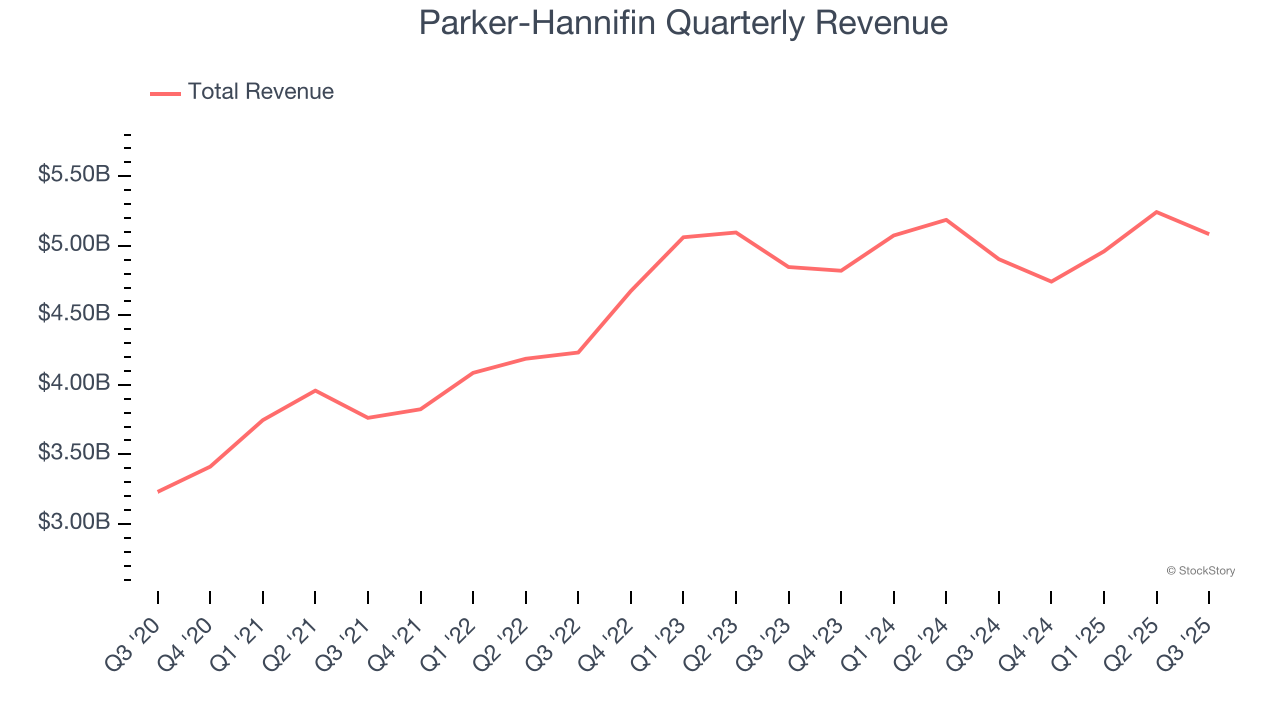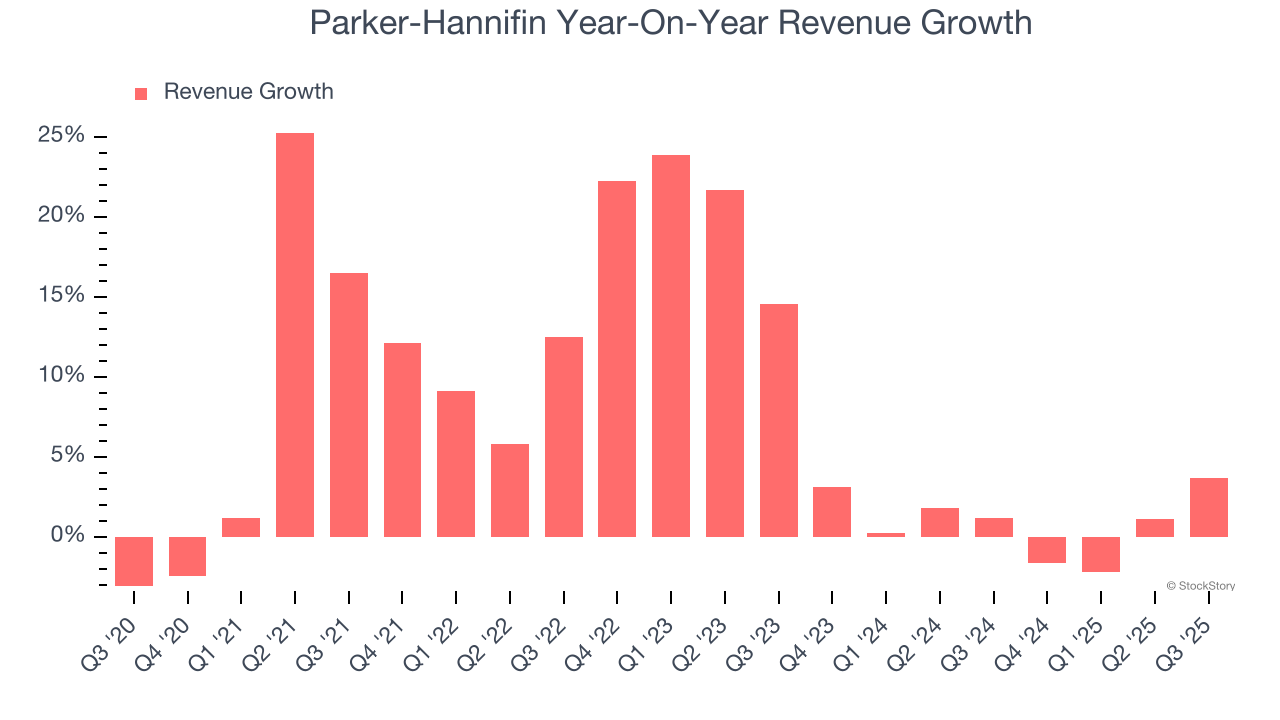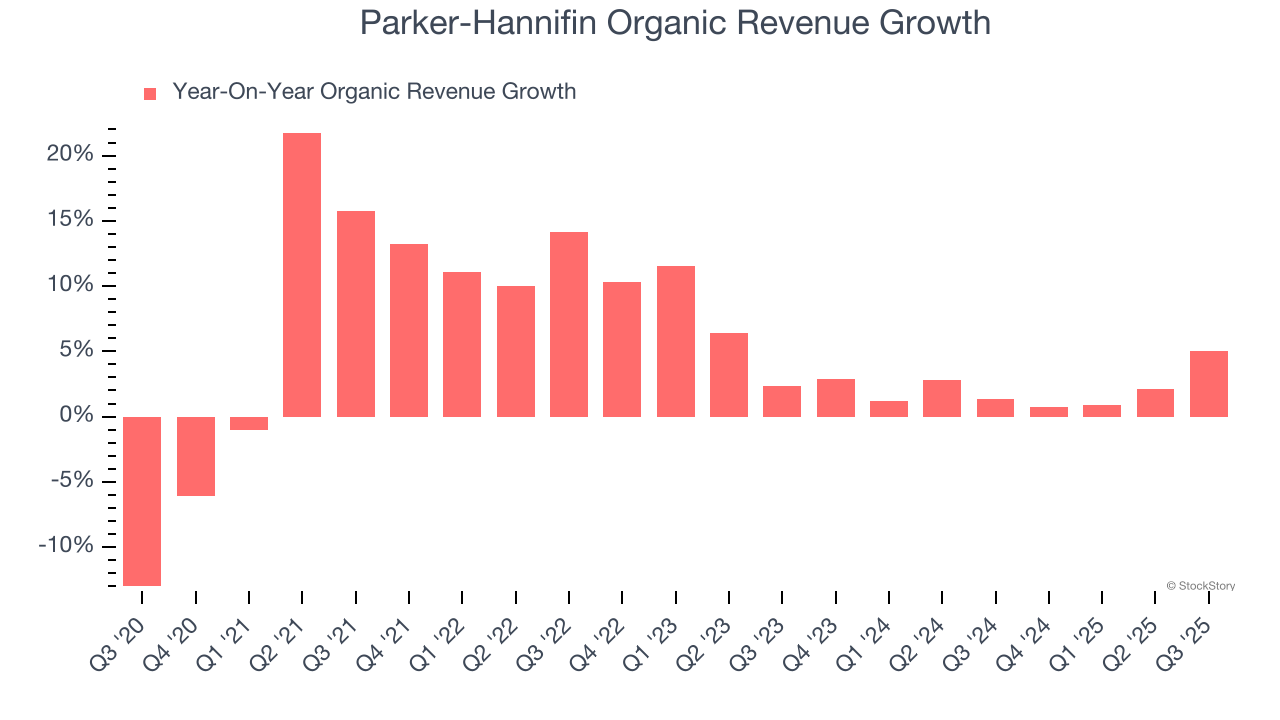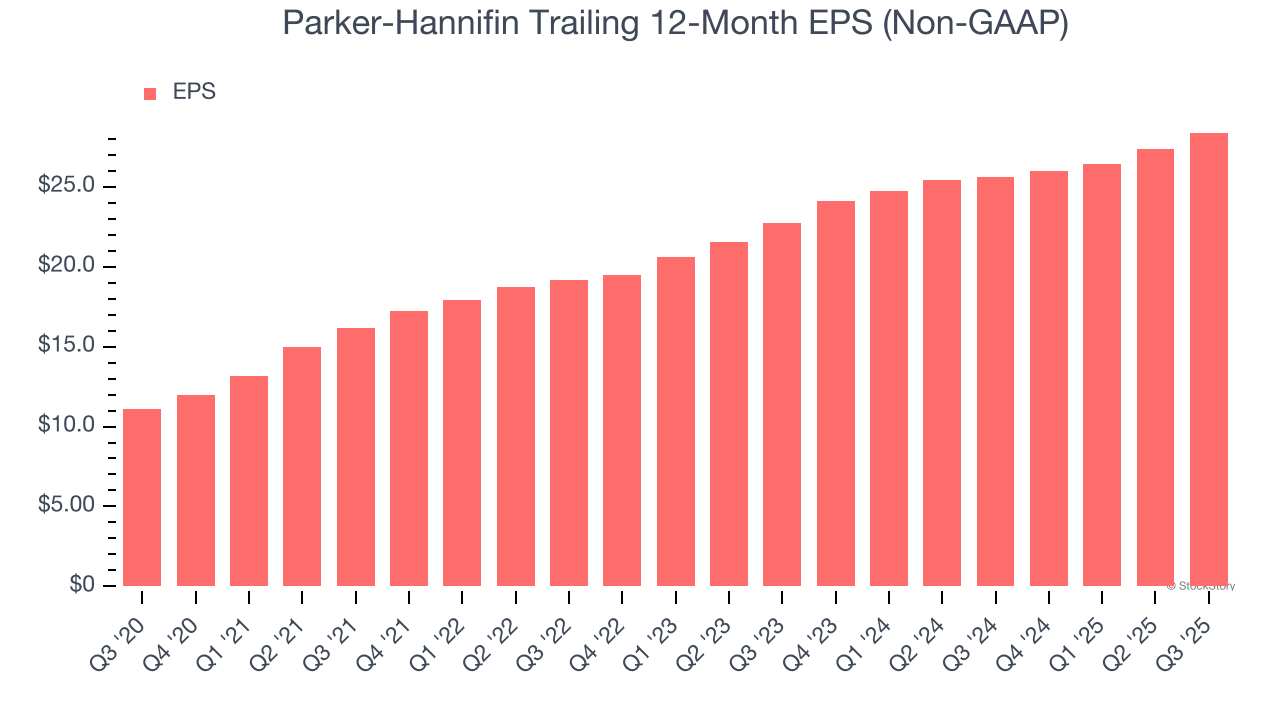
Industrial machinery company Parker-Hannifin (NYSE: PH) reported Q3 CY2025 results beating Wall Street’s revenue expectations, with sales up 3.7% year on year to $5.08 billion. Its non-GAAP profit of $7.22 per share was 9% above analysts’ consensus estimates.
Is now the time to buy Parker-Hannifin? Find out by accessing our full research report, it’s free for active Edge members.
Parker-Hannifin (PH) Q3 CY2025 Highlights:
- Revenue: $5.08 billion vs analyst estimates of $4.94 billion (3.7% year-on-year growth, 2.9% beat)
- Adjusted EPS: $7.22 vs analyst estimates of $6.62 (9% beat)
- Adjusted EBITDA: $1.27 billion vs analyst estimates of $1.28 billion (24.9% margin, 1.4% miss)
- Management raised its full-year Adjusted EPS guidance to $30 at the midpoint, a 3.8% increase
- Operating Margin: 20.3%, in line with the same quarter last year
- Free Cash Flow Margin: 13.6%, similar to the same quarter last year
- Organic Revenue rose 5% year on year vs analyst estimates of 2.1% growth (294.7 basis point beat)
- Market Capitalization: $97.96 billion
“Our global team produced record sales, segment operating margin, earnings per share and year-to-date cash flow,” said Jenny Parmentier, Chairman and Chief Executive Officer.
Company Overview
Founded in 1917, Parker Hannifin (NYSE: PH) is a manufacturer of motion and control systems for a wide variety of mobile, industrial and aerospace markets.
Revenue Growth
A company’s long-term sales performance is one signal of its overall quality. Any business can experience short-term success, but top-performing ones enjoy sustained growth for years. Luckily, Parker-Hannifin’s sales grew at a decent 8.1% compounded annual growth rate over the last five years. Its growth was slightly above the average industrials company and shows its offerings resonate with customers.

We at StockStory place the most emphasis on long-term growth, but within industrials, a half-decade historical view may miss cycles, industry trends, or a company capitalizing on catalysts such as a new contract win or a successful product line. Parker-Hannifin’s recent performance shows its demand has slowed as its revenue was flat over the last two years. 
Parker-Hannifin also reports organic revenue, which strips out one-time events like acquisitions and currency fluctuations that don’t accurately reflect its fundamentals. Over the last two years, Parker-Hannifin’s organic revenue averaged 2.1% year-on-year growth. Because this number aligns with its two-year revenue growth, we can see the company’s core operations (not acquisitions and divestitures) drove most of its results. 
This quarter, Parker-Hannifin reported modest year-on-year revenue growth of 3.7% but beat Wall Street’s estimates by 2.9%.
Looking ahead, sell-side analysts expect revenue to grow 4.8% over the next 12 months. While this projection indicates its newer products and services will spur better top-line performance, it is still below the sector average.
The 1999 book Gorilla Game predicted Microsoft and Apple would dominate tech before it happened. Its thesis? Identify the platform winners early. Today, enterprise software companies embedding generative AI are becoming the new gorillas. a profitable, fast-growing enterprise software stock that is already riding the automation wave and looking to catch the generative AI next.
Operating Margin
Operating margin is an important measure of profitability as it shows the portion of revenue left after accounting for all core expenses – everything from the cost of goods sold to advertising and wages. It’s also useful for comparing profitability across companies with different levels of debt and tax rates because it excludes interest and taxes.
Parker-Hannifin has been a well-oiled machine over the last five years. It demonstrated elite profitability for an industrials business, boasting an average operating margin of 18.2%. This result isn’t too surprising as its gross margin gives it a favorable starting point.
Analyzing the trend in its profitability, Parker-Hannifin’s operating margin rose by 3.7 percentage points over the last five years, as its sales growth gave it operating leverage.

This quarter, Parker-Hannifin generated an operating margin profit margin of 20.3%, in line with the same quarter last year. This indicates the company’s cost structure has recently been stable.
Earnings Per Share
Revenue trends explain a company’s historical growth, but the long-term change in earnings per share (EPS) points to the profitability of that growth – for example, a company could inflate its sales through excessive spending on advertising and promotions.
Parker-Hannifin’s EPS grew at an astounding 20.7% compounded annual growth rate over the last five years, higher than its 8.1% annualized revenue growth. This tells us the company became more profitable on a per-share basis as it expanded.

Diving into the nuances of Parker-Hannifin’s earnings can give us a better understanding of its performance. As we mentioned earlier, Parker-Hannifin’s operating margin was flat this quarter but expanded by 3.7 percentage points over the last five years. On top of that, its share count shrank by 1.5%. These are positive signs for shareholders because improving profitability and share buybacks turbocharge EPS growth relative to revenue growth. 
Like with revenue, we analyze EPS over a shorter period to see if we are missing a change in the business.
For Parker-Hannifin, its two-year annual EPS growth of 11.7% was lower than its five-year trend. We still think its growth was good and hope it can accelerate in the future.
In Q3, Parker-Hannifin reported adjusted EPS of $7.22, up from $6.20 in the same quarter last year. This print beat analysts’ estimates by 9%. Over the next 12 months, Wall Street expects Parker-Hannifin’s full-year EPS of $28.38 to grow 4.1%.
Key Takeaways from Parker-Hannifin’s Q3 Results
We were impressed by Parker-Hannifin’s optimistic full-year EPS guidance, which blew past analysts’ expectations. We were also glad its organic revenue outperformed Wall Street’s estimates. On the other hand, its EBITDA slightly missed. Zooming out, we think this was a good print with some key areas of upside. The stock traded up 5% to $813.01 immediately following the results.
Sure, Parker-Hannifin had a solid quarter, but if we look at the bigger picture, is this stock a buy? When making that decision, it’s important to consider its valuation, business qualities, as well as what has happened in the latest quarter. We cover that in our actionable full research report which you can read here, it’s free for active Edge members.






